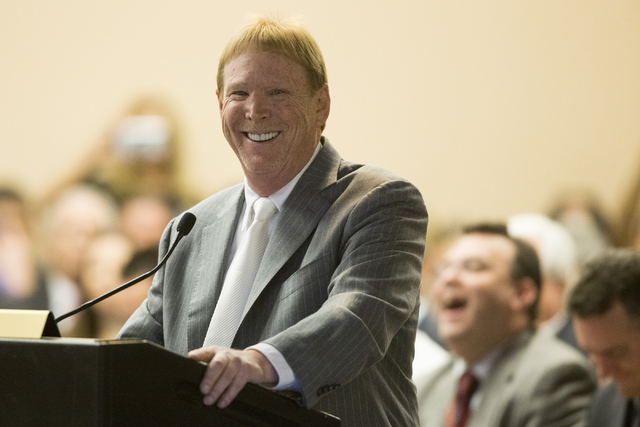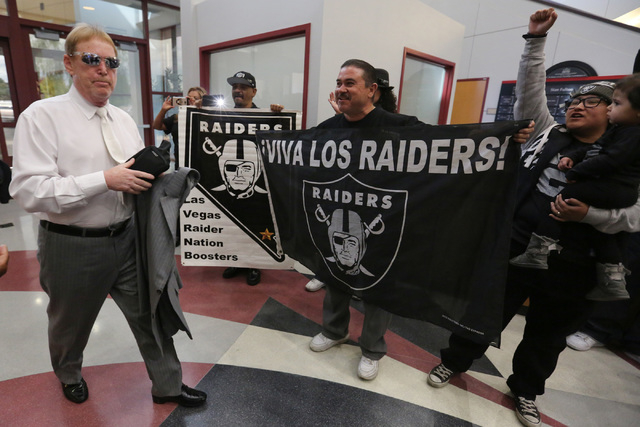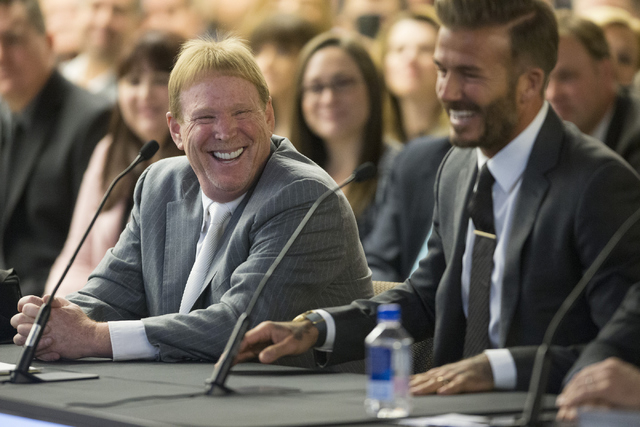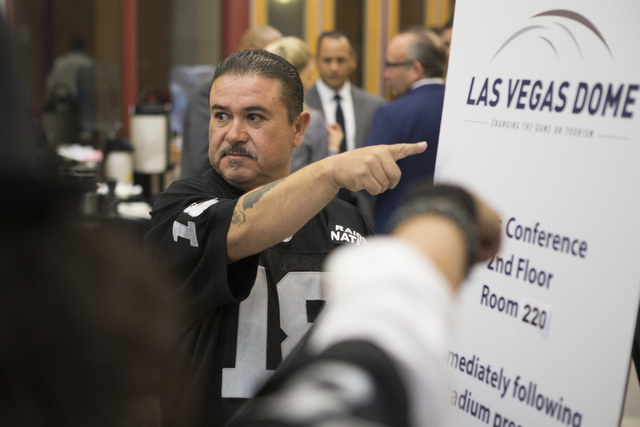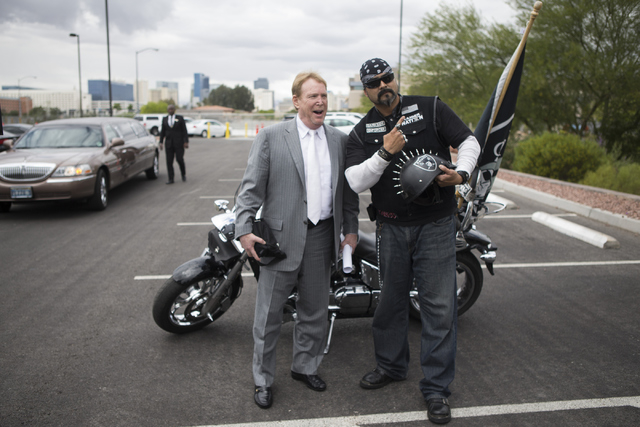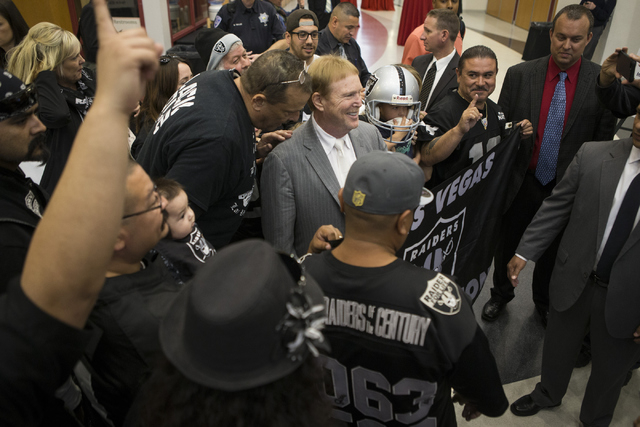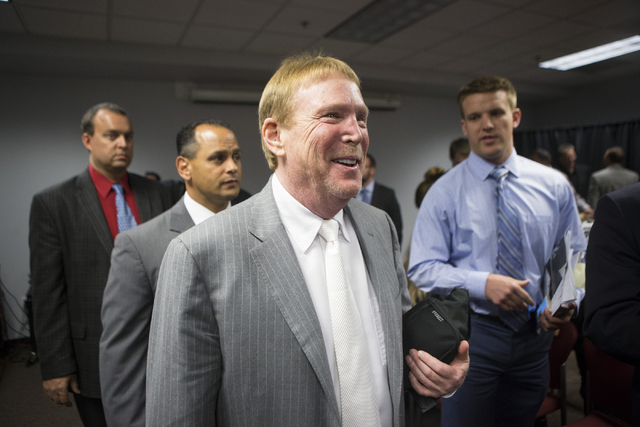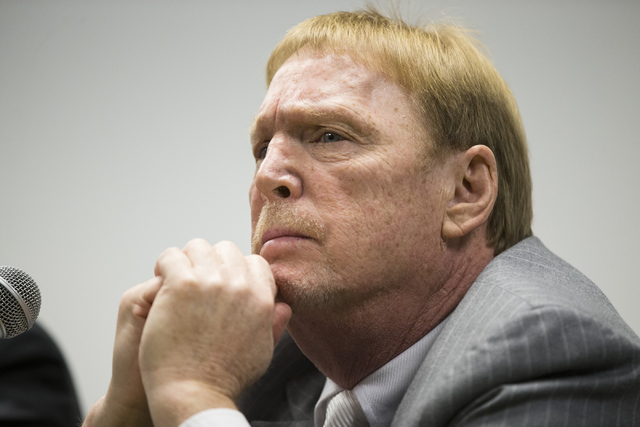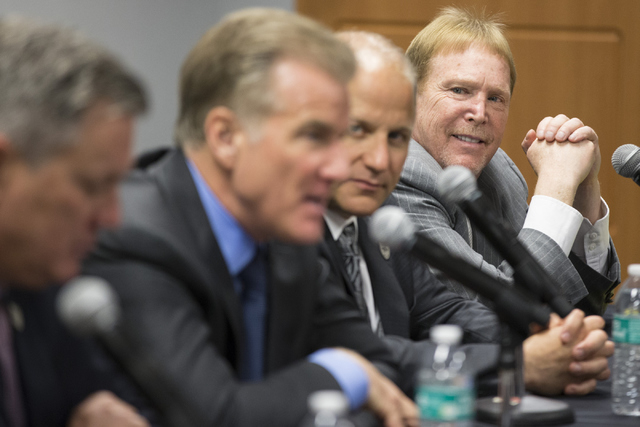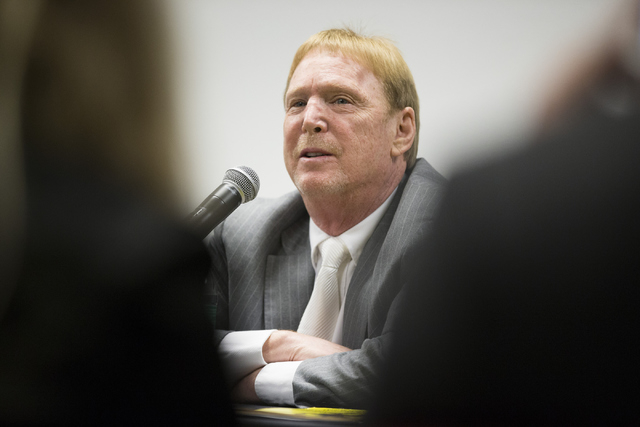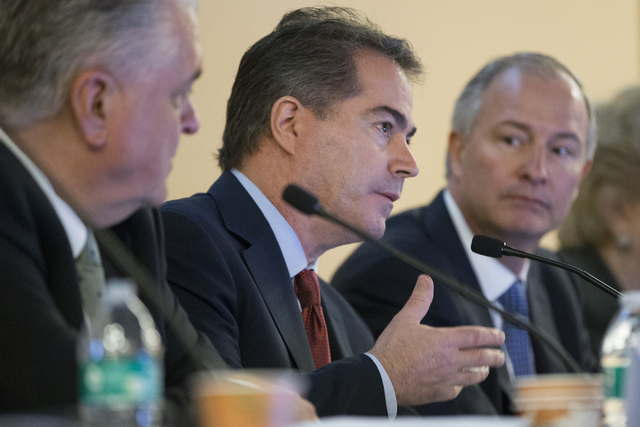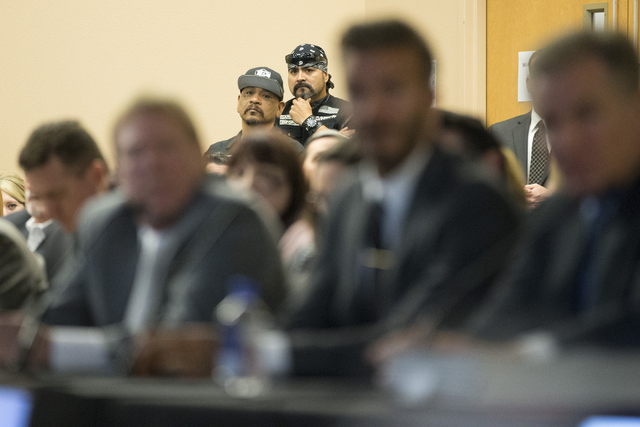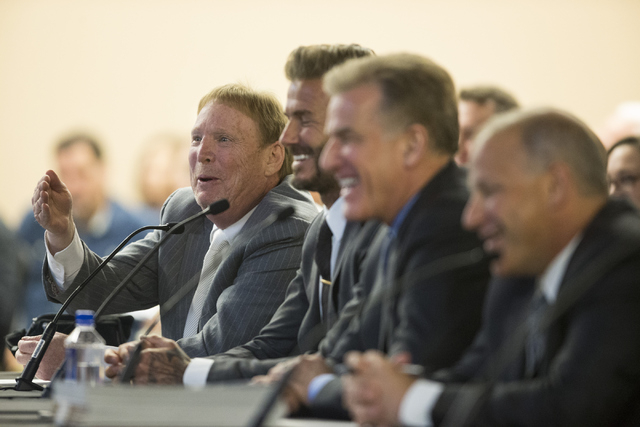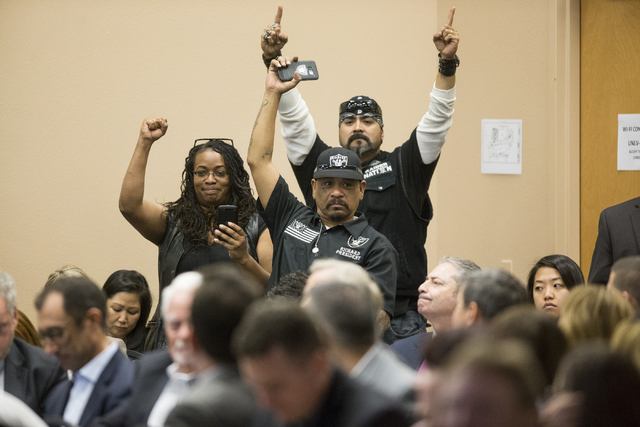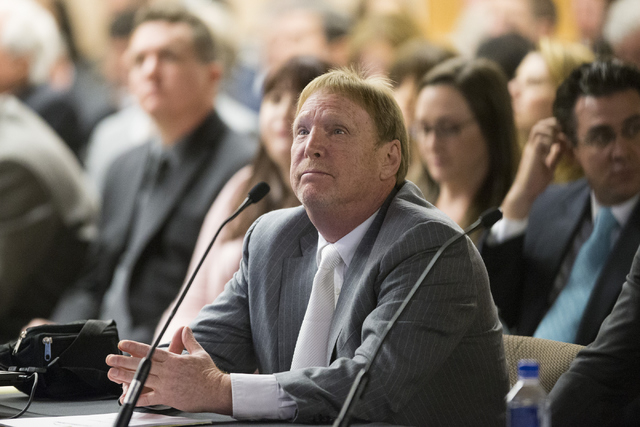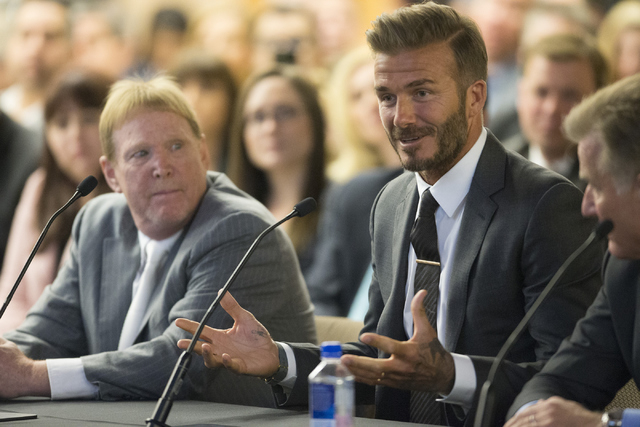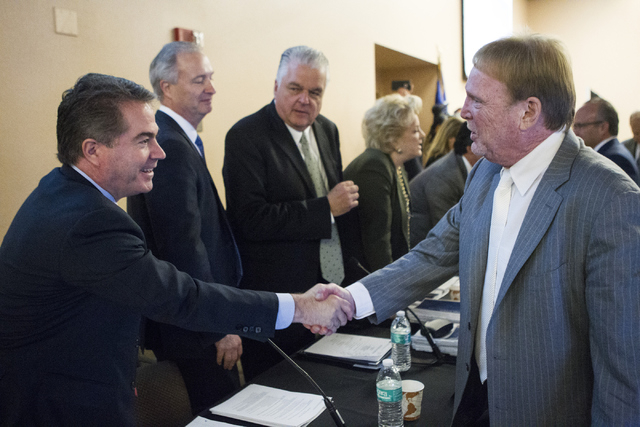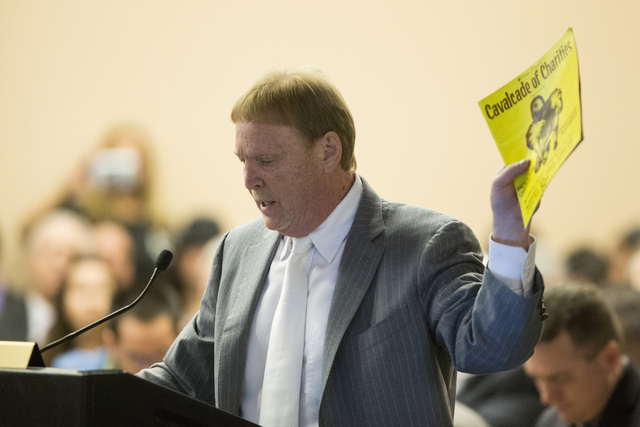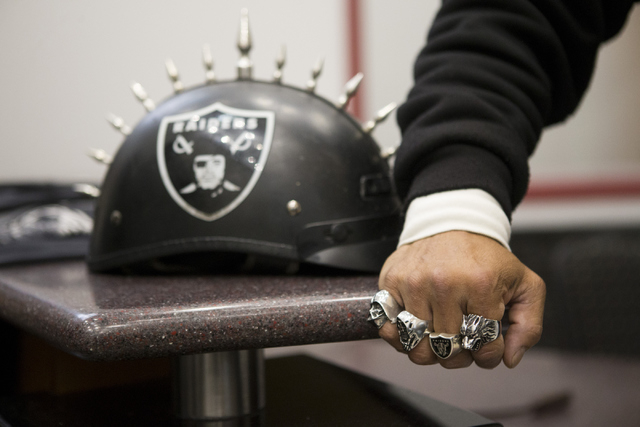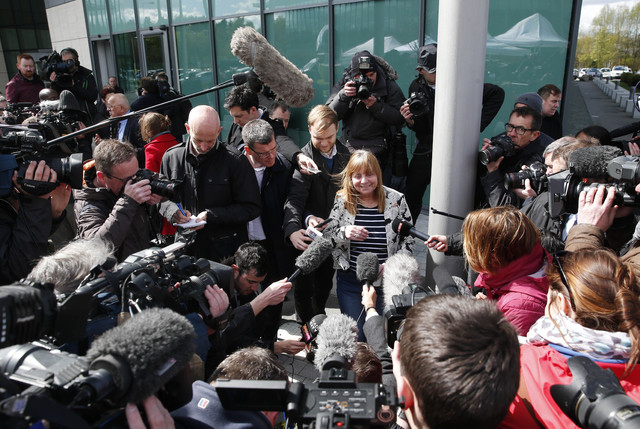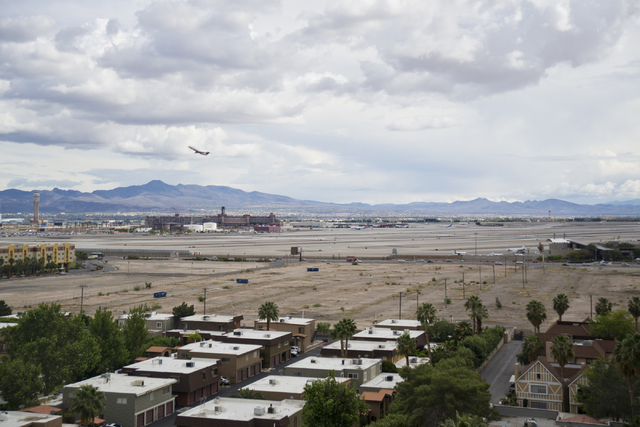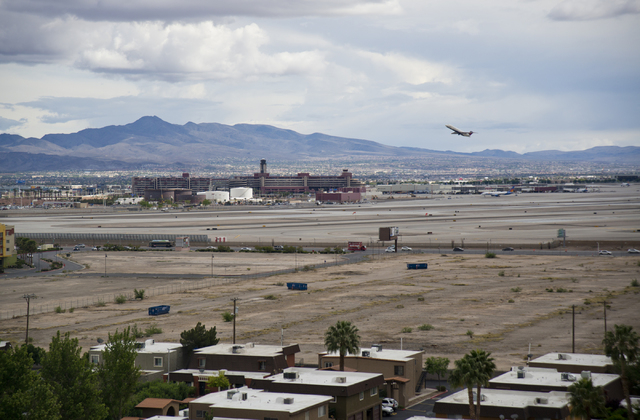Raiders pledge move to Las Vegas, but potential stadium site far from settled
Oakland Raiders owner Mark Davis on Thursday told the Southern Nevada Tourism Infrastructure Committee that he wants to move his NFL franchise to Las Vegas, and he pledged $500 million toward the construction of a $1.4 billion domed stadium if a public-private financing plan is approved by the Legislature.
Exactly how the balance of the dome’s costs would be covered and where it would be built were far from settled Thursday.
Under a proposal discussed Thursday, the 65,000-seat project would be funded by $750 million in tourist taxes and $150 million from a partnership between casino operator Las Vegas Sands Corp. and Majestic Realty. A specific tax plan wasn’t presented.
A 42-acre site at Tropicana Avenue and Koval Lane, owned by UNLV and toured by Davis earlier this year, is the preferred location for committee Vice Chairman Len Jessup, president of UNLV. He believes having a stadium close to campus “would create the pathway for us to move to a Power Five conference” such as the Pac-12 or Big 12.
“That’s significant to the university, both athletically and academically,” Jessup said. “In terms of the gameday experience, I want you guys to lock in on the 42 acres and keep focused on that because we’re talking about an existing approximately 150 acres stretching all the way from the MGM (Grand) property to the 42 acres to property that the county owns and a vast set of parking lots in front of our Thomas & Mack (Center).”
Jessup said a $72 million renovation of the Thomas & Mack is nearing completion and includes a ballroom that overlooks the entire 150 acres he described.
“All of that will be a part of the gameday experience,” he said. “There’s plenty of room for the Raider Nation to come and celebrate and for the Rebel Nation to celebrate and for every other event that we have.”
But officials at McCarran International Airport already have expressed misgivings about the site at previous committee meetings. In addition to worries that the Federal Aviation Administration could limit flights on the airport’s north-south runways, Clark County Department of Aviation Director Rosemary Vassiliadis said traffic along Tropicana Avenue, Koval Lane, Swenson Street and Paradise Road — key routes to the airport — could create traffic jams on gamedays.
In addition, fireworks displays or laser shows near the stadium could create hazards for pilots flying in and out on those runways. Because some of the 150 acres, most of it county land, falls within McCarran’s Runway Protection Zone, some of the area would be off-limits — even to tailgaters.
So where else could the stadium go?

Numerous sources listed several potential locations under consideration. Committee Chairman Steve Hill said sorting out those ideas will be a key topic at the committee’s May 26 meeting. Other possible sites include:
■ The Riviera site, which was purchased by the Las Vegas Convention and Visitors Authority to make way for an expansion of the Las Vegas Convention Center. Some of the nation’s most innovative designs in convention centers include a stadium component, such as Houston’s NRG Center. A similar design has been proposed as a new home for the San Diego Chargers. However, the LVCVA wants the Riviera site available for outdoor exhibits for the ConExpo-Con/Ag construction equipment show in March 2017.
■ The Rock in Rio festival grounds at Sahara Avenue and Las Vegas Boulevard. Alan Feldman, executive vice president of MGM Resorts International, said his company hasn’t been approached about using the 33-acre site for a stadium. “There could be a discussion about it,” he said. “Obviously, a lot more investigation into the details would have to happen.”
■ The golf course at Wynn Las Vegas. Even though Wynn Resorts Chairman and CEO Steve Wynn has proposed building Wynn Paradise Park, a 38-acre lagoon with white sand beaches to accommodate water-sport enthusiasts, committee members believe there’s plenty of room for a stadium as well. It’s also close enough to the Las Vegas Convention Center to benefit conferences.
■ The Las Vegas Sands employee parking area. Officials acknowledge the site probably is too small to accommodate a stadium, but it would have Las Vegas Monorail access if a station were built somewhere near Sands Avenue and Koval Lane to connect to the Sands Expo and Convention Center.
■ Cashman Center. The LVCVA, which runs the downtown complex, is considering returning it to the city of Las Vegas. The city wants to redevelop the 55-acre site, which includes Cashman Field, home of the Las Vegas 51s minor league baseball team. The 51s are considering a move to a new stadium that would be built near the Downtown Summerlin retail center. The city has received a proposal from the United Soccer League to convert the baseball field to a soccer stadium for a Las Vegas franchise. Cashman would be near a proposed downtown trolley circulator line that, as planned, would run between McCarran and downtown along Maryland Parkway.
The Southern Nevada Tourism Infrastructure Committee will make nonbinding project recommendations to the Legislature this summer. The committee does not have the power to approve the stadium or the taxes to fund it; the Legislature does.
On Thursday the committee also discussed the formation of a stadium authority that would be responsible for the design, financing, construction and operation of the facility.
Under a proposed Clark County Stadium Authority, which would have to be approved by the Legislature, two members would be appointed by the Sands-Majestic partnership, two by the governor and one by the Clark County Commission. It would be empowered to solicit and receive bids, oversee any tax increment districts and enter lease agreements with tenants and other parties.
The stadium could be home to the Raiders, the UNLV football team and sports and special events too large to be accommodated by existing Las Vegas arenas. Dozens of Raiders fans dressed in silver and black cheered and temporarily drowned out committee proceedings when Davis entered the Stan Fulton Building on the UNLV campus.
The Review-Journal is owned by the family of Las Vegas Sands Chairman and CEO Sheldon Adelson.
Contact Richard N. Velotta at rvelotta@reviewjournal.com or 702-477-3893. Find him on Twitter: @RickVelotta
RELATED
Raiders owner Mark Davis voices commitment to Las Vegas
Raiders Nation shows support for moving team to Las Vegas
Cheering for Las Vegas Raiders is easy; funding stadium a tad less so
David Beckham makes pitch to bring soccer to Las Vegas
UNLV's Tony Sanchez calls proposed new stadium a 'game changer'



